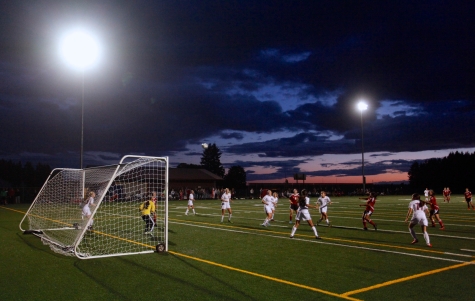E. Athletic Performance
“A universal recovery strategy that is essential to both physiological adaptation and to the consolidation of skill development is sleep. It is well known that sleep deprivation and sleep disturbance can impair mental and physical function, immune response and other restorative processes important for athletes. Athletes need to ensure they are getting enough sleep at night and should also consider how napping can contribute to their recovery.” (440)—Gordon Sleivert, Ph.D., former (late) Vice President of Sport Performance, Canadian Sport Centre Pacific, Director, Human Performance Center, School of Physical Education, University of Otago, Professor of Kinesiology, University of New Brunswick.
Sleep Restriction vs. Sleep Extension
Just as insufficient sleep is associated with diminished athletic/psychomotor performance, (126, 219, 418, 427) so extra sleep is correlated with improved athletic/psychomotor performance. (125) The benefits of extra sleep for athletes have been established repeatedly. (441, 442, 443, 444, 445) Increased sleep is associated with faster reaction times (447) and peak athletic performance. (448) “Athletes should aim for 10 hours of sleep per night. … Adolescent athletes may need more sleep.” (440)
Sleepiness, by contrast, may slow reaction times (448.5) and increase the risk of sports injuries in teens. (449, 449.1) Sleep-deprived athletes are more likely “to make a risky decision that could lead to injury 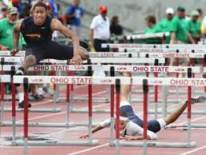 and also have diminished accuracy and hand-eye coordination that would have otherwise prevented injury[.]” (449.2) In addition, “sleep deprivation affects proprioception — the sense of balance that allows you to feel your weight shifting, even when your eyes are closed,” increasing the likelihood of falling. (449.2)
and also have diminished accuracy and hand-eye coordination that would have otherwise prevented injury[.]” (449.2) In addition, “sleep deprivation affects proprioception — the sense of balance that allows you to feel your weight shifting, even when your eyes are closed,” increasing the likelihood of falling. (449.2)
According to Cheri Mah of the Stanford Sleep Disorders Clinic and Research Laboratory, “Sleep duration may be an important consideration for an athlete’s daily training regimen[.] … Furthermore, sleep extension also may contribute to minimizing the effects of accumulated sleep deprivation and thus could be a beneficial strategy for optimal performance.” (450) Mah’s 2010 study of college football players found most entered training with sleep deficits. The athletes were encouraged to press for extra sleep, up to 10 hours nightly. After several weeks of consistent additional sleep, athletic performance 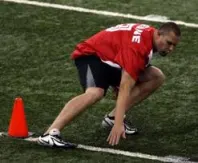 began to improve. (450, 451) Average sprint time in the 20-yard shuttle improved from 4.71 seconds to 4.61 seconds, and the average 40-yard dash time decreased from 4.99 seconds to 4.89 seconds. (450) Daytime sleepiness and fatigue also decreased significantly, while vigor scores significantly improved. (450)
began to improve. (450, 451) Average sprint time in the 20-yard shuttle improved from 4.71 seconds to 4.61 seconds, and the average 40-yard dash time decreased from 4.99 seconds to 4.89 seconds. (450) Daytime sleepiness and fatigue also decreased significantly, while vigor scores significantly improved. (450)
A 2011 study details Mah’s work with 11 members of Stanford men’s basketball team, investigating the effects of sleep extension on specific measures of athletic performance, as well as reaction time, and daytime sleepiness. (425, 426) Using a questionnaire-based sleepiness scale at the beginning of the study, Mah and her colleagues also discovered that many of the athletes had a moderate-to-high baseline level of daytime sleepiness—indicating that they were carrying sleep debt accumulated from chronic sleep loss. (425, 426)
The researchers asked the players to maintain their normal nighttime schedule (sleeping for six to nine hours) for two to four weeks and then aim to sleep 10 hours each night for the next five to seven weeks. (425, 426) During the study period, players abstained from drinking coffee and alcohol, and they were asked to take daytime naps when travel prohibited them from reaching the 10 hours of nighttime sleep. (425, 426)
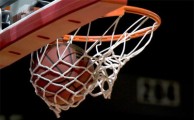 At the end of the sleep extension period, the players ran faster 282-foot sprints (16.2 seconds versus 15.5 seconds) than they had at baseline. (425, 426) Shooting accuracy during practice also improved: free throw percentages increased by 9 percent and 3-point field goal percentage increased by 9.2 percent. (425, 426) Fatigue levels decreased following sleep extension, and athletes reported improved practices and games. (425, 426)
At the end of the sleep extension period, the players ran faster 282-foot sprints (16.2 seconds versus 15.5 seconds) than they had at baseline. (425, 426) Shooting accuracy during practice also improved: free throw percentages increased by 9 percent and 3-point field goal percentage increased by 9.2 percent. (425, 426) Fatigue levels decreased following sleep extension, and athletes reported improved practices and games. (425, 426)
“While most athletes and coaching staff may believe that sleep is an important contributing factor in sports, many do not realize that optimal or peak performance can only occur when an athlete’s sleep and sleep habits are optimal.” (448, 425)
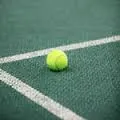 A 2013 Loughborough University study of semi-professional men and women tennis players found sleep deprivation diminished serving accuracy, particularly for women. (452) Caffeine in 80 milligram doses failed to improve serving performance for men or women. (452)
A 2013 Loughborough University study of semi-professional men and women tennis players found sleep deprivation diminished serving accuracy, particularly for women. (452) Caffeine in 80 milligram doses failed to improve serving performance for men or women. (452)
Performance Timing
While students at later starting schools get more sleep (discussed infra, § IV.D.), and may remember plays better, (449.2) these benefits may be undone for athletes attending practice before the first bell. (Cf. n. 58) [zero hour classes “negate … beneficial effects of a later school starting time”].) A pilot study of 46 competitive Canadian high school athletes found that despite the fact that most athletes (>85%) were mid-range to morning types, with only 14% moderate evening types, and no extreme evening types, rising at 5:30 a.m. for sports training restricted daily sleep by 1-2 hours. (262) Most athletes got less than 8 hours of sleep per school night. (262) By contrast, Cornell University’s over-achieving wrestling team eliminated early-morning practices and encouraged sleeping in after consulting with Professor James Maas. (453)
Brookings Institute economists observe that the fiscal benefits 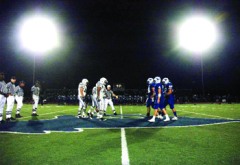 of installing field lights for nighttime practices (as part of a plan to delay middle and high school start times by one hour to “roughly” 9 a.m.) would greatly outweigh the costs. (49) Notably, enhanced athletic performance is most frequently seen in the afternoon (454, 455) and early evening, (456) although athletes perform best in accordance with their individual chronotypes, with some reaching performance peaks during morning hours. (457, 458, 459)
of installing field lights for nighttime practices (as part of a plan to delay middle and high school start times by one hour to “roughly” 9 a.m.) would greatly outweigh the costs. (49) Notably, enhanced athletic performance is most frequently seen in the afternoon (454, 455) and early evening, (456) although athletes perform best in accordance with their individual chronotypes, with some reaching performance peaks during morning hours. (457, 458, 459)
“Selecting the best circadian time can result in as much as a 10% increase in athletic performance. A 10% decrement in peak performance can be compared with a performance after less than three hours of sleep, after drinking the legal limit of alcohol, or after taking barbiturates. Jet lag may cause a shift in the circadian peak window.” (264)
While not a concern at most high schools, studies of professional athletes have uniformly found teams traveling from west to east, rather than east to west, most likely to perform well, whether in basketball, (460) baseball, (461) or football. (454, 462) Researchers surmise that players traveling from west to east are more likely to be playing at the time of peak circadian performance. (454, 460)
In addition, “[e]nhanced athletic performance has been suggested when competition times and training times coincide.” (454, citation omitted.)  In 1997, for example, Stanford scientists evaluating data from 25 years of Monday Night Football (MNF) hypothesized that west coast teams should have an advantage over east coast teams. MNF games begin at 9 p.m. E.S.T.
In 1997, for example, Stanford scientists evaluating data from 25 years of Monday Night Football (MNF) hypothesized that west coast teams should have an advantage over east coast teams. MNF games begin at 9 p.m. E.S.T.
“Relative to their endogenous circadian clocks (3-hour time difference between coasts) the WC teams essentially start these games at 6:00 p.m. The WC teams should theoretically demonstrate an advantage because they are playing closer to the proposed peak athletic performance time (late afternoon). On the other hand, EC teams essentially start playing at 9:00 p.m. and frequently play to 12:00 midnight, which is closer to the human performance nadir (late night, early morning).” (454, citations omitted.)
Win-loss records (relative to point spreads and home-field advantage) were analyzed using logical regression. West coast teams won more often, won by more points, and performed significantly better than predicted by the Las Vegas point spread. Simply selecting the west coast team without considering any other variable successfully predicted the winner against the point spread 67.9 percent of the time. (454)
In stressing to coaches the importance of adequate sleep for Olympic athletes, Mark Rosekind, Ph.D., detailed the negative effects of sleep loss.
“Most people believe that they can lose sleep or disrupt their circadian clock with minimal or no consequences; ok, maybe they feel a little tired. Extensive scientific research clearly demonstrates that sleep loss and circadian disruption can degrade or impair just about every aspect of human capability and performance. For example, studies have shown that sleep loss can reduce judgment and decision-making, reaction time, attention, memory, communication skills, mood, and learning. Depending on the variable and amount of sleep loss, performance in these areas can be reduced by 10 to 50%. Performance during the lowest circadian point in the night could be reduced by up to 30%.” (463)
Effects of Chronic Fatigue
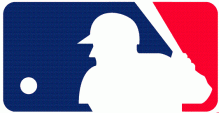 In a poster session presented at the meeting of the American Academy of Neurology on March 18, 2013, Stanford’s Scott Kutscher, et al., studied the effects of fatigue on 30 major league baseball (MLB) teams over the course of a 162-game season. (464) Researchers tracked the frequency of Major League Baseball batters swinging at pitches outside of the strike zone, comparing records from 2006 to 2011 to those from 2002 to 2005. (464) Performance in strike-zone judgment consistently worsened through the season, with the effect increasing following the 2005 ban on stimulants. (464)
In a poster session presented at the meeting of the American Academy of Neurology on March 18, 2013, Stanford’s Scott Kutscher, et al., studied the effects of fatigue on 30 major league baseball (MLB) teams over the course of a 162-game season. (464) Researchers tracked the frequency of Major League Baseball batters swinging at pitches outside of the strike zone, comparing records from 2006 to 2011 to those from 2002 to 2005. (464) Performance in strike-zone judgment consistently worsened through the season, with the effect increasing following the 2005 ban on stimulants. (464)
“This trend occurred despite potential gains from practice and repetition through the season. The increase in O-Swing% through the year suggests worsening vigilance and judgment, and may represent fatigue effect.” (464)
A second study by Kutscher, et al. presented in a June 2013 poster session at the annual meeting of the Associated Professional Sleep Societies, tracked the frequency of MLB batters swinging at pitches outside of the strike zone during the 2012 season. (465) Data were sorted by month for all 30 teams, and expressed as the percentage of pitches swung at outside of the strike zone to total number of pitches outside the strike zone (O-Swing%). (465) Data for each team were compared to the statistical model, which predicts a linear increase in O-swing% by 0.59 (SD ± 0.08) per month. (465) O-swing% was higher in September than in April in 24/30 (80%) of teams, and when averaged across all teams, O-swing% was significantly lower in April (29.2 ± 2.63) versus September (31.4 ± 2.15). (465) Thus, as in the previous study, performance in strike-zone judgment was significantly worse at the end of the season, suggesting worsening vigilance and possible fatigue effect. (465)
In a separate poster session from the June 2013 conference, sleep expert W. Chris Winter, et al., noted a “a clear and profound relationship between the sleepiness of a MLB player and his longevity in the league.” (466) Prior to the 2010 season, researchers collected Epworth Sleepiness Scale (ESS) data from 81 players randomly selected from 3 teams. (466) Of the 81 MLB players, 31 were inactive as of December 16, 2012. This represented a baseline attrition rate of 38.3%. (466) For players scoring 11 or higher on an ESS, attrition was 75%. (466) Other scores and their corresponding attrition rates: 9-10 (62.5%), 7-8 (40%), 4-6 (28.6%), 0-3 (13.3%). (466) Winter reports that the “data indicates a clear and profound relationship between the sleepiness of a MLB ballplayer and his longevity in the league.” (466)
A 2017 Stanford University study found that among professional baseball players, extending sleep by one hour over five nights resulted in faster cognitive processing, reduced fatigue, and decreased daytime sleepiness. (467, 468) As part of a plan to ensure adequate rest, Rosekind encourages creating “a specific plan for managing sleep, circadian rhythms and alertness at home and traveling to competitions. Identify specific strategies to obtain optimal sleep, how to manage circadian disruption, and when to use alertness strategies.” (463)

